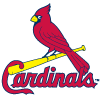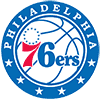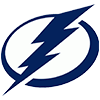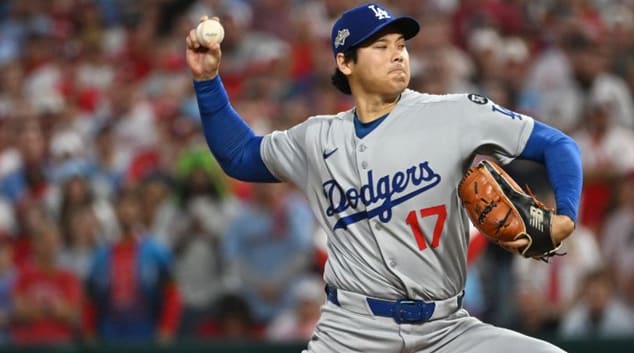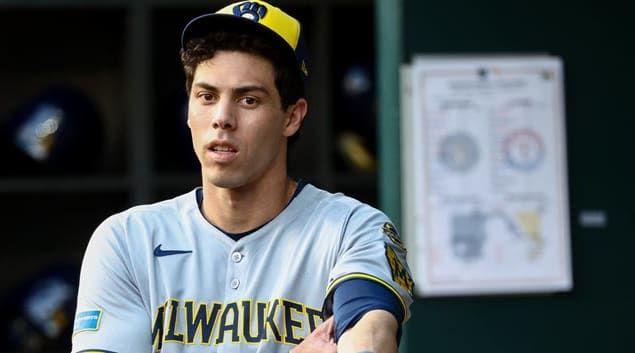Learning From the Outliers
by Derek VanRiper (@DerekVanRiper)
Learning From the Outliers will appear in the RotoWire Fantasy Baseball Guide 2014 that recently went to the printer. Look for more from DVR in The Wheelhouse during spring training and the regular season.
The players at both ends of the spectrum - unexpected breakouts and unpleasant disappointments - often dictate our rotisserie fate. Of the 12 most profitable hitters in the Tout Wars Mixed League auction in 2013, only two commanded more than $10 at the draft table - Chris Davis at $16 (he earned $48) and Paul Goldschmidt ($21, earned $47).
Shares of the most profitable players are hardly cost prohibitive, yet there are plenty of us who watched our opponents reap the benefits of owning Davis, Carlos Gomez, Matt Harvey and Jose Fernandez. If those owners didn't go on to win their leagues, they definitely started the season better positioned to make a strong run toward finishing in the money.
Two immediate questions come to mind when thinking about those players: Why did I miss on them? And, who should I consider as candidates for similar breakouts this season?
There is a common link between Davis, Gomez, Harvey and Fernandez - pedigree.
Take a look back at the 2008 Baseball America Prospect Handbook and you will find a Texas Rangers farm system that placed fourth in the overall organizational rankings. Within that year's team rankings, Davis ranked second behind then 20-year-old shortstop Elvis Andrus.
Learning From the Outliers
by Derek VanRiper (@DerekVanRiper)
Learning From the Outliers will appear in the RotoWire Fantasy Baseball Guide 2014 that recently went to the printer. Look for more from DVR in The Wheelhouse during spring training and the regular season.
The players at both ends of the spectrum - unexpected breakouts and unpleasant disappointments - often dictate our rotisserie fate. Of the 12 most profitable hitters in the Tout Wars Mixed League auction in 2013, only two commanded more than $10 at the draft table - Chris Davis at $16 (he earned $48) and Paul Goldschmidt ($21, earned $47).
Shares of the most profitable players are hardly cost prohibitive, yet there are plenty of us who watched our opponents reap the benefits of owning Davis, Carlos Gomez, Matt Harvey and Jose Fernandez. If those owners didn't go on to win their leagues, they definitely started the season better positioned to make a strong run toward finishing in the money.
Two immediate questions come to mind when thinking about those players: Why did I miss on them? And, who should I consider as candidates for similar breakouts this season?
There is a common link between Davis, Gomez, Harvey and Fernandez - pedigree.
Take a look back at the 2008 Baseball America Prospect Handbook and you will find a Texas Rangers farm system that placed fourth in the overall organizational rankings. Within that year's team rankings, Davis ranked second behind then 20-year-old shortstop Elvis Andrus. Reading that scouting report (and others from that time), it's clear that Davis has always possessed tremendous raw power.
In 2011, Davis was traded from the Rangers to the Orioles, and he finished the season with a combined .266/.305/.402 line over 59 games at the big league level. There was little indication in that body of work suggesting he was ready to deliver on his potential the following season, but a closer look at his Triple-A numbers that year at age-25 (.368/.405/.824, 24 homers, 66 RBI in 210 plate appearances) probably merited more attention. Davis had a relatively unhyped breakout to the tune of a .270/.326/.501 line and 33 homers in his first full campaign with the Orioles in 2012.
Despite providing a power and batting average combo (30+ HR, .270 AVG) that just 15 other players reached, Davis was regularly selected outside of the Top 100 in NFBC drafts (15-team mixed) going into last season. Of that 16-player group, 13 were in the Top 75 in Average Draft Position last spring. Only Davis, Adam LaRoche and Corey Hart failed to regularly crack to the Top 100, while all three fell between 119th and 153rd overall.
Once upon a time the Mets were projected to have an outfield duo capable of rivaling any pair in baseball in terms of raw tools. The lead member of that duo, Lastings Milledge, spent 2013 watching Wladimir Balentien swat 60 home runs for the Yakult Swallows in Japan. The other, Carlos Gomez, proved that his 2012 step forward wasn't a fluke, hitting 24 homers and stealing 40 bases while carrying a .284/.338/.506 line with the Brewers.
Gomez was rushed to the big leagues by the Mets in 2007 during his age-21 season, and he hit .243/.291/.357 over his first five years with sporadic flashes of the talent that once made him a highly coveted prospect. As a result, his 19-homer, 37-steal campaign in just 452 plate appearances in 2012 elicited a commonly held "do it again" stance. Needless to say, he did it again, and is now being valued as a top-10 outfielder in mixed formats.
Harvey impressed in a 10-start run with the Mets at the end of 2012, racking up an elite 10.6 K/9 (28.6% strikeout rate) and finishing with a 2.73 ERA and 1.15 WHIP. The only red flag was control, as Harvey carried a 3.9 BB/9 with Triple-A Buffalo and the Mets, but the walks disappeared last season as he cut that rate to 1.6 BB/9 (4.5% BB%). A couple of things that should have stood out include Harvey's excellent swinging-strike rate (12.0% in 2012, 7th among starting pitchers with 50 IP or less) and high fastball velocity (94.7 mph, 5th among starting pitchers) along with a quality arsenal of secondary offerings.
Fernandez is an extremely rare case - skipping Double-A and Triple-A to make his big league debut at age-20 and staying in the rotation all season while turning in one of the best debuts in the Expansion Era. There were few questions about Fernandez's ceiling and talent, but there were plenty of questions throughout March as to the Marlins' willingness to let him skip two levels of the minor leagues. Beyond that, there was a legitimate question as to how he might adapt to facing big leagues hitters following such an aggressive promotion.
Even if you connected on one of the aforementioned breakout players, rostering any of the extreme disappointments may have offset those gains, especially if you happened to own more than one of them. In cases of devastating injuries and lengthy suspensions, we are at the mercy of true misfortune, and there is rarely a full-scale lesson to be learned. Of greater interest, are the more challenging cases of regression - B.J. Upton, Starlin Castro, Ike Davis, and Rickie Weeks destroyed plenty of teams last season, and we are left wonder if there were signs we should have seen cautioning us against owning them before the drop-off.
Upton's collapse in 2013 was one of the most extreme cases in recent memory. Prior to last season, he carried a three-year average line of .242/.317/.436 with annual means of 23 homers and 36 steals during that span. Those numbers were backed by a 26.2% strikeout rate and 9.7% walk rate. Even with that plate discipline profile, Upton's combination of power and speed drew owners in the NFBC to take him regularly in the first three rounds as he carried an ADP of 39th overall last spring. The volatility in a skill set like Upton's should lead to pause about paying the premium for Carlos Gomez in 2014, as Gomez has a three-year line of .264/.314/.470 (averaging 17 homers and 31 steals annually, with less playing time than Upton had from 2010-2012) supported by a 23.7% strikeout rate and 5.5% walk rate.
While Gomez heads into 2014 as a top-30 overall player in many drafts, Upton has fallen out of the Top 200. The latter serves as a cautionary tale of investing in the former at his increased price, but Upton looks like a possible rebound candidate and bargain given his age (29), track record and skill set. Keep in mind, however, that his ceiling in batting average has likely fallen with the erosion of his contact skills, but it would hardly be surprising if a significant share of his power and speed return.
Castro's lapses in focus on the field are well documented, but his reduced walk rate and increased strikeout rate came as a surprise last season. Throughout his career, Castro has had rocky relationships with his managers, but perhaps things will be different with the Cubs' hiring of Rick Renteria this winter. It's easy to forget that Castro will turn 24 in March, in large part because the Cubs promoted him to Chicago as a 20-year-old in 2010 and he already has 2,617 plate appearances in the big leagues. Even with the disappointing 2013, Castro is one of just four shortstops in the Expansion Era to have three seasons with double-digit homers before their age-24 season (Alex Rodriguez, Wil Cordero and Cal Ripken Jr. are the others). Edgar Renteria accomplished the feat twice, and while that might be the better comp for Castro, a return to 2012 numbers would be well worth his new price tag, and there is still growth potential given his age if the light bulb ever turns on. The skill sets are completely different, but perhaps Castro's lack of maturity and unexpected slide last season should make us think twice about Yasiel Puig as a top-25 player.
Looking at his splits, perhaps Davis' first half in 2012 should have garnered more attention (.201/.271/.388), but he drew more walks (increasing from 8.8 to 12.1%) and cut back on his strikeouts (from 26.1 to 22.1%) while hitting .255/.346/.542 with 20 homers over his final 289 plate appearances. Further, the early-season struggles were attributed to his spring bout with Valley Fever. His career numbers prior to last season showed major issues handling left-handed pitching, but that hardly explains his .165/.255/.250 line and subsequent demotion to Triple-A in the first half of 2013. Davis teased us again with a strong second half, as he hit .286/.449/.505 with a gaudy 23.2% walk rate over his final 38 games before a strained oblique ended his season early. Despite the improvement after his return from Las Vegas, Davis is coming off the board nearly 200 picks later in early drafts this winter, falling outside the current Top 300. Priced as a lottery ticket, it's difficult to pass on his potential of a 30-plus homer season in his age-27 season.
Weeks has battled a variety of injuries throughout his career, and 2013 was no exception as his season was cut short following surgery on his left hamstring. Since peaking with an .857 OPS in 2009, Weeks has dropped in the category in each season since, while the culprit in each of the last two seasons has been a significant drop in power. Evaluating Weeks is complicated enough when considering the reported injuries, but it's entirely possible that he has dealt with additional ailments that have gone unreported. His documented injury history includes surgery on each of his wrists (2006 and 2009), so it's possible that the bat speed has deteriorated, but Weeks has become a draft day afterthought and taking a chance on a rebound will require a minimal investment.
Understanding the specifics of each player's injuries is crucial, since a track record like Weeks' can temper optimism about the bounce-back potential of Jose Reyes or Matt Kemp to the untrained eye. If nothing else, the difficulties that arise evaluating players with lengthy injury histories are a great reminder of why it's important to follow the work of health professionals in our industry. To that end, consider Jeff Stotts' weekly injury article a must-read.
Finding patterns and overlapping trends can be beneficial in unearthing future outliers. Here are some potential breakout candidates and disappointments based on their respective profiles heading into the 2014 season.
| Last Year It Was | This Year It Is | Why |
| Chris Davis | Jose Abreu | Reports of plus-power, an immediate opportunity in the middle of the White Sox's order, and playing half of his games in hitter-friendly U.S. Cellular Field give Abreu a very high ceiling. Pedro Alvarez fits a similar profile, but is carrying a higher draft-day price. |
| Carlos Gomez | Desmond Jennings | Jennings is still just 27, and injuries almost certainly reduced his stolen-base total last season. .260-.270 with 15-18 HR, 35-40 SB are still within his skill set. |
| Matt Harvey | Danny Salazar | Similar dominance in a 10-start stretch upon arrival in the big leagues, and an equally impressive arsenal give Salazar elite potential. Perhaps the biggest obstacle he faces is a potential innings limit. |
| Jose Fernandez | Archie Bradley | Fernandez's path is more once-in-a-generation than you might think. Bradley gets the nod here if only because he has the talent to immediately become the D-Backs' best starter and a coveted rotisserie commodity upon arrival. |
| B.J. Upton | Carlos Gomez | We may never see a crash like Upton's again, but if I had to bet on a current top-30 overall player to follow a similar path, that wager would be placed on Gomez. |
| Starlin Castro | Yasiel Puig | The comparison here is purely a maturity one - could Puig's erratic behavior prevent (or at least delay) him from tapping into his potential as a top-five overall player? |
| Rickie Weeks | None | As previously noted, the rapid decline of a player like Weeks might be attributed to his lengthy injury history. Every player is unique, making it critically important to gather as much information as you can before targeting an undervalued player with a poor health record. |
| Ike Davis | Jedd Gyorko | Like Davis, Gyorko has plenty of power, but he also showed contact issues (23.4% K%) and walked at a low clip (6.3% BB%). Davis' wRC and wOBA from 2012 are nearly identical to Gyorko's. Tread very carefully here. |












